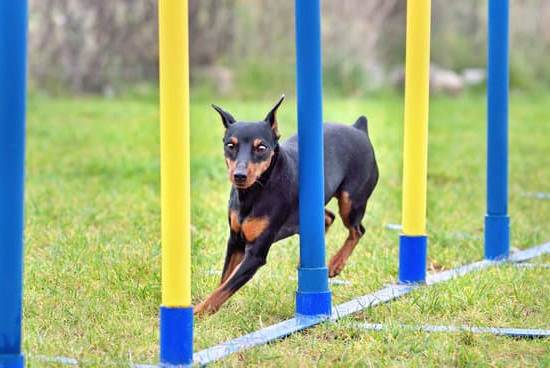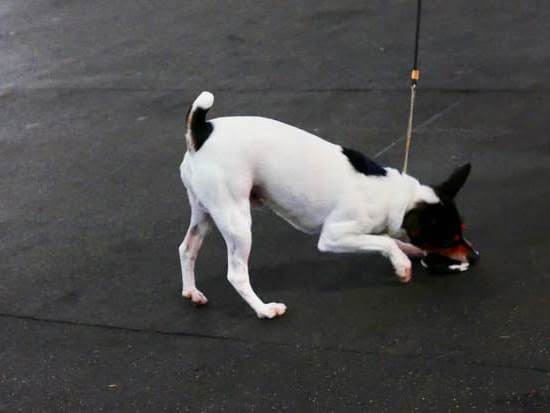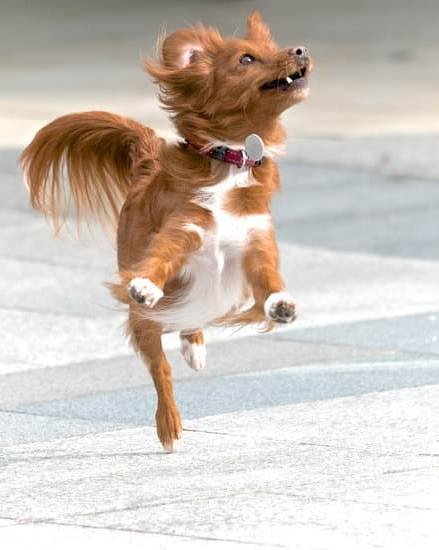Are you tired of your dog having accidents indoors? Litter box training a dog can be an effective solution to address this common issue. By understanding the concept of litter box training and its benefits, you can successfully teach your furry friend to use a designated area for their bathroom needs.
Litter box training offers several advantages for both pet owners and their dogs. It provides a convenient indoor solution for small breeds, senior dogs, or those living in high-rise apartments. Additionally, it can be beneficial for pet owners with busy schedules or limited access to outdoor areas. Understanding the process and implementing the right techniques is crucial for successful litter box training.
In this article, we will explore the essential aspects of litter box training for dogs, including selecting the right litter box, setting it up correctly, introducing your dog to the new environment, addressing common challenges, using positive reinforcement techniques, maintaining a consistent routine, and ensuring long-term success. Whether you have a puppy or an adult dog, our comprehensive guide will help you navigate through the process with patience and confidence.
Selecting the Right Litter Box
When it comes to litter box training a dog, selecting the right litter box is essential for setting your furry friend up for success. There are several factors to consider when choosing a litter box for your dog, and making the right choice can make the training process much smoother and more effective.
Factors to Consider:
1. Size: When selecting a litter box for your dog, consider their size and breed. Larger dogs will require a bigger litter box to comfortably use it, while smaller breeds may do well with a more compact option.
2. Material: The material of the litter box is also important to consider. Look for durable, easy-to-clean materials that will withstand regular use and make maintenance hassle-free.
3. Accessibility: Some dogs may have mobility issues or may be hesitant to use a litter box with high sides. Opt for a litter box with lower entry points to accommodate dogs of all ages, sizes, and abilities.
4. Odor control: Choose a litter box that offers effective odor control features to keep your home smelling fresh and clean despite regular use by your pet.
5. Placement: Consider where you will place the litter box in your home when selecting the right one for your dog. Ensure that it’s easily accessible for your pet but also placed away from high-traffic areas to provide them with privacy.
Once you’ve considered these factors and chosen the right litter box for your dog, you can move on to setting it up properly and introducing your dog to their new bathroom spot in the next steps of the training process. With the right litter box in place, you’re one step closer to successfully training your dog to use it consistently.
Setting Up the Litter Box
When it comes to litter box training a dog, setting up the litter box properly is crucial for the success of the training process. The first step is to choose the right location for the litter box. It should be placed in a quiet and easily accessible area of your home, away from your dog’s feeding and sleeping areas. This will help create a designated space where your dog can go to relieve themselves.
Once you have selected the ideal location, it’s important to choose the right type of litter box for your dog. Consider factors such as size, material, and ease of access.
For small breed dogs, a shallow and open litter pan may be more suitable, while larger dogs may require a larger and more enclosed box for privacy. Additionally, some dogs may prefer a specific type of litter over others, so it may take some trial and error to find the perfect match.
After selecting the appropriate litter box, it’s time to introduce the litter. There are various types of litter available, including clumping clay, silica gel crystals, and natural-based options such as pine or wheat.
Experiment with different types of litter to see which one your dog prefers. Once you have chosen a suitable litter, fill the box with enough material to cover the bottom surface but not so much that it becomes difficult for your dog to move around in.
In addition to choosing an appropriate location and setting up the right type of litter box with suitable material, providing proper reinforcement during this initial stage of setup can greatly affect how well your pup takes onto using their new potty space.
| Aspect | Description |
|---|---|
| Location | The spot selected must be quiet and easily accessible |
| Litter Box Type | Selecting one based on factors like size and material |
| Litter Type | Experimenting with various options before deciding on one |
Introducing the Dog to the Litter Box
Creating a Positive Environment
When introducing your dog to the litter box, it’s important to create a positive and welcoming environment. Place the litter box in a quiet and easily accessible area of your home where your dog feels comfortable.
Avoid placing the litter box near their food and water bowls, as dogs generally prefer to keep their elimination area separate from their eating area. Additionally, make sure the litter box is kept clean and free of any strong odors that may deter your dog from using it.
Encouraging Exploration
To familiarize your dog with the litter box, allow them to explore it at their own pace. Place some treats or toys near the litter box to encourage your dog to approach it and investigate. You can also gently guide your dog towards the litter box and reward them with praise when they show interest in it. Avoid forcing or scolding your dog during this introduction phase, as negative experiences may create resistance towards using the litter box.
Transitioning From Outdoor Elimination
If your dog is used to eliminating outdoors, transitioning them to using a litter box may take some time and patience. Take note of their usual elimination schedule and try to lead them to the litter box around those times.
You can also place some soiled paper towels or a small amount of dirt from their usual potty area into the litter box to help associate it with their natural instinct to eliminate in that spot. Be consistent with this process and provide plenty of encouragement and rewards when your dog successfully uses the litter box for elimination.
Litter box training a dog requires patience, consistency, and positive reinforcement techniques. By creating a pleasant environment for your dog, encouraging exploration of the litter box, and easing the transition from outdoor elimination, you can effectively familiarize them with using a litter box for their bathroom needs.
Addressing Common Challenges
Understanding Resistance
In some cases, dogs may initially resist the idea of using a litter box for their bathroom needs. This resistance can stem from various factors such as unfamiliarity with the litter box, anxiety, or discomfort. It’s important to be patient and understanding during this phase of training, as forcing the dog to use the litter box can cause further resistance and stress.
Identifying the Root Cause
When faced with resistance from your dog, it’s crucial to identify the root cause of their reluctance. Is the litter box placed in a location that makes them uncomfortable? Are there any underlying health issues that are affecting their ability to use the litter box? By closely observing your dog’s behavior and consulting with a veterinarian if necessary, you can address any underlying issues and make necessary adjustments to facilitate successful litter box training.
Accidents Outside the Litter Box
During the training process, it’s not uncommon for dogs to have accidents outside of the litter box. Instead of expressing frustration or reprimanding your dog, focus on reinforcing positive behavior when they do use the litter box correctly. Additionally, consider gradually expanding your dog’s access to other areas of your home once they consistently demonstrate successful litter box usage.
Maintaining Cleanliness
Some dogs may display reluctance to use a soiled or smelly litter box. It’s important to maintain cleanliness by regularly scooping out waste and replacing soiled litter. Additionally, using odor-neutralizing products can help create a more inviting environment for your dog.
By addressing common challenges such as resistance and troubleshooting any issues that may arise during the training process, you can effectively guide your dog toward successful litter box training while promoting a positive and supportive learning experience.
Positive Reinforcement Techniques
Litter box training a dog can be a challenging process, but using positive reinforcement techniques can make it much easier. When it comes to encouraging good behavior in your dog, rewards and praise can be powerful tools. By associating the litter box with positive experiences, you can help your dog understand that using it is a desirable behavior.
One effective method of using positive reinforcement is to give your dog a treat or verbal praise every time they use the litter box correctly. This creates a positive association with the act of using the designated area for elimination. It’s important to provide the reward immediately after your dog has used the litter box, as this helps them understand which specific behavior is being rewarded.
Consistency is key when employing positive reinforcement techniques. Make sure to reward your dog every time they use the litter box properly, especially during the initial stages of training. Over time, as your dog becomes more accustomed to using the litter box, you can gradually reduce the frequency of rewards while still offering occasional praise to reinforce their good behavior.
In addition to treats and verbal praise, some dogs respond well to physical affection as a form of positive reinforcement. For some dogs, a gentle belly rub or ear scratch after successfully using the litter box can serve as an effective reward. Understanding what motivates your individual dog will help you tailor your positive reinforcement techniques for maximum effectiveness.
| Positive Reinforcement Technique | Description |
|---|---|
| Treats | Offering a small treat immediately after your dog uses the litter box correctly |
| Verbal Praise | Using words of encouragement and approval when your dog eliminates in the designated area |
| Physical Affection | Giving gentle pats or scratches as a reward for proper litter box use |
Maintaining the Litter Box Routine
Once you have successfully introduced your dog to the concept of using a litter box, it is crucial to establish a consistent schedule for maintaining the cleanliness of the litter box. This will not only ensure that your dog continues to use it regularly but also promotes good hygiene and eliminates any potential odors in your home. Here are some best practices for maintaining a clean and inviting litter box environment:
1. Scoop the litter box at least once a day: Regularly removing waste from the litter box is essential to prevent odor buildup and create a clean space for your dog to use. Invest in a durable scooper designed for picking up waste easily without causing damage to the litter box.
2. Change the litter regularly: Depending on the type of litter you use, it’s important to replace the entire contents of the litter box every 1-2 weeks. Some litters may require more frequent changes, so be sure to follow the manufacturer’s recommendations for optimal freshness.
3. Clean the litter box with mild soap and water: Periodically, it’s necessary to thoroughly clean the litter box to remove any residual odors and maintain its overall cleanliness. Use a small amount of mild detergent and warm water to scrub down the interior of the box, then thoroughly rinse and dry before adding fresh litter.
By implementing these best practices into your routine, you can ensure that your dog has a consistently clean and inviting environment in which to do their business. This will also help foster long-term success in using the litter box as your dog’s preferred restroom area.
Remember that consistency is key when it comes to maintaining the litter box routine for your dog. Stick to a regular schedule for cleaning and upkeep, and be patient as your dog continues their journey toward successful litter box training. With time and positive reinforcement, they will learn to associate this designated space with proper elimination behavior.
Additionally, consider placing the litter box in an easily accessible but private area of your home so that your dog feels comfortable using it without feeling exposed or isolated. Your efforts in maintenance will ultimately contribute to establishing good habits in your pet and enjoying a clean household environment overall.
Long-Term Success
After successfully training your dog to use the litter box, it is important to establish habits and routines that promote long-term success. Consistency and positive reinforcement are key components in ensuring that your dog continues to use the litter box regularly and successfully. In this section, we will discuss some tips for maintaining a positive litter box routine for your dog.
First and foremost, it is essential to maintain a consistent schedule for your dog’s litter box routine. Dogs thrive on predictability and routine, so feeding them at the same times each day can help regulate their bathroom habits. Additionally, be sure to take your dog to the litter box after meals, naps, and playtime to encourage regular use.
In addition to a consistent schedule, it is crucial to keep the litter box clean and inviting for your dog. Regularly scoop out waste and replace soiled litter with fresh litter to ensure that the environment remains sanitary. This will not only prevent accidents outside of the litter box but also encourage your dog to continue using it.
Finally, continue to use positive reinforcement techniques as part of your long-term approach to litter box training. Praise and reward your dog whenever they successfully use the litter box, as this will reinforce the desired behavior. With patience and consistency, you can help your dog develop a lifelong habit of using the litter box effectively.
Conclusion
In conclusion, litter box training a dog can be a challenging but ultimately rewarding process. By understanding the concept of litter box training and its benefits, pet owners can provide their dogs with an alternative indoor elimination option that is particularly useful for small breeds, elderly dogs, or pets living in apartments or urban environments.
Selecting the right litter box and setting it up properly are crucial steps in ensuring the success of the training process. It’s important to consider factors such as size, material, and accessibility when choosing a litter box for your dog.
Introducing your dog to the litter box and addressing common challenges may require patience and consistent effort. Using positive reinforcement techniques, such as rewards and praise, can help encourage desirable behavior and make the training process more effective. Maintaining a regular routine for the litter box is also essential for long-term success. Cleanliness and consistency play a key role in encouraging your dog to continue using the litter box regularly.
In summary, litter box training a dog requires dedication and persistence from pet owners. By following the tips provided in this guide and approaching the training process with patience and consistency, pet owners can successfully teach their dogs to use a litter box. With time and effort, dogs can adapt to this new behavior and provide both themselves and their owners with a convenient solution for indoor elimination needs.
Frequently Asked Questions
Is Litter Box Training a Dog a Good Idea?
Litter box training a dog may not be the best idea unless there are specific reasons for it, such as living in an apartment with no access to outdoor potty areas. It can confuse dogs who are also being taken outside.
How Do I Get My Dog to Use the Litter Box?
To get your dog to use the litter box, you’ll need to start by associating the litter box with positive experiences. Place the box in a convenient location and use positive reinforcement when your dog uses it. Consistency is key.
How Long Does It Take to Litter Box Train a Puppy?
Litter box training a puppy can take some time and patience. It typically takes several weeks for puppies to understand and consistently use the litter box. Consistent training, positive reinforcement, and patience are crucial during this process.

Welcome to the blog! I am a professional dog trainer and have been working with dogs for many years. In this blog, I will be discussing various topics related to dog training, including tips, tricks, and advice. I hope you find this information helpful and informative. Thanks for reading!





